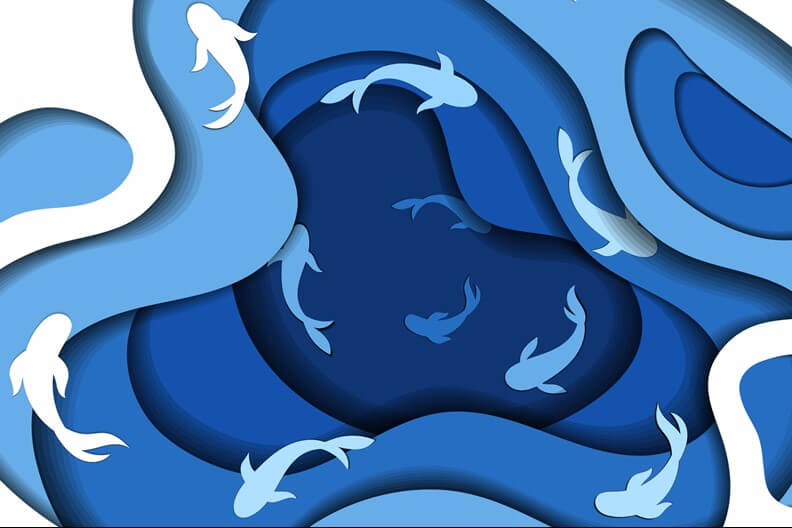Marketing and sales efforts are key drivers of business growth. But did you know that a majority of business leaders overlook marketing and sales strategies to determine effectiveness? That’s right! Despite the crucial need of sales and marketing:
- 77% of companies don’t identify unique advantages of their business.
- 65% of companies think their strategy won’t lead the company to success.
- 63% of companies don’t have a well-defined strategy.
- 21% of companies don’t even have a list of strategic priorities.
Source: (1)
Reviewing strategies is time-consuming, yet it’s necessary for agility. When it comes to how well strategies work, marketing and sales strategies lose their power over time as the market changes.
Savvy leaders use analysis frameworks to dig deeper into the details of their business. This precise approach saves time while improving the chances of identifying what strategies will work.
Business frameworks are structured approaches that provide an organized and systematic way to overcome the challenges that marketing and sales professionals face. They help users navigate the complex process of planning, executing, and analyzing their marketing and sales efforts.
These frameworks break down the complex elements of strategies into simplified and manageable pieces, making it easier to develop strategies that resonate with target audiences. Most importantly, they are instrumental in the creation of effective strategies that are aligned with overarching business goals.
Below, learn about the 8 business frameworks that every marketing and sales leader should know.
1- BLUE OCEAN STRATEGY
Blue Ocean Strategy was developed with the intent to make the competition irrelevant by focusing on largely undiscovered/underused marketing spaces and generating uncontested demand. In these markets, defined as “blue oceans,” companies have the opportunity to create demand where none existed previously by offering products or services that are different from any that are available currently.
The ultimate goal of Blue Ocean Strategy is to achieve value innovation by creating unique value and delivering it efficiently. In doing this, the framework shakes up the long-held belief that companies must choose between differentiation and cost leadership.
Pros
- Avoids markets that are oversaturated and mature.
- Improves and expands growth potential by creating new demand and value.
- Based on solid data and practical approaches with proven results.
Cons
- Identifying untapped large markets is challenging.
- The risk that potential customers in a new market might not grasp the value of a product in its early stages is considerable.
- Discovering a promising new market will attract competitors who wish to leave oversaturated markets.
Example:
An insurance provider creates a streamlined, app-based claims process with instant payouts, disrupting the traditionally slow and paperwork-heavy industry.
2 – DIFFUSION OF INNOVATION
When a new product or service is launched into the market, different people receive it in different ways. Specifically, it is diffused quickly to some people and slowly to others. The Diffusion of Innovation theory proposes that five distinct groups of people will receive any product differently according to the group into which they fall:
- Innovators— As pioneers, innovators prefer to be the first ones to use a product and are willing to take the risks associated with it.
- Early adopters – Early adopters are influencers in their social lives, educated about trends and eager for progress.
- Early majority – People who are informed begin to adopt the product in a mass market.
- Late majority – A traditional and skeptical group of people adopt the product after the early majority does.
- Laggards – As the very last group to adopt a product, laggards resist doing so until the very end and adopt it begrudgingly.
Successfully launching a product requires achieving a “tipping point” – that is, attracting enough people who find the new product attractive to spread the word to the next group and convince them to try it. The widely held belief is that the tipping point exists between the early adopters and the early majority.
Pros:
- Provides a framework to help companies understand which factors drive innovation implementation success.
- Has been applied in a large variety and number of fields with successful outcomes.
- Supports the analysis of diffusion patterns according to social networks, innovation characteristics and individual characteristics.
Cons:
- Has limitations in how applicable it is to studying the implementation of new products from an organizational standpoint.
- Runs the risk of overlooking the nuances and complexities of new product diffusion.
- Might not account for all the factors that can influence the diffusion of a new product.
Example:
Think of how smartphones spread—first among early adopters, then with the wider population. Smartphone use is presently at a stage where even those who have resisted must adapt because it is unavoidable.
3 – S-CURVE PATTERN OF INNOVATION
The S-curve Pattern of Innovation underscores the reality that a product gradually becomes more profitable as it evolves over time until it reaches maturity. This lifecycle is known as the S-curve.
An organization should have new products ready to seize future revenue generation opportunities once products on the market mature. Typically, the next-in-line products are related or upgraded versions of the product nearing maturity.
A company can predict when a product will reach maturity by identifying its position on the lifecycle curve, determining the curve’s slope and how quickly the product is moving through the lifecycle, and comparing it to similar products launched previously.
Pros:
- Solid way to evaluate the different stages a product goes through.
- Highlights the importance of preparing for technological discontinuities.
- Positions a company to move first within a market.
Cons:
- Cannot quantify what kind of advantages the technology offers, making it challenging to determine when to invest in it and when to dispose of it.
- Does not provide insight into how others might view the new technology or who might introduce it.
- Might not reflect changes in the market.
Example:
Consider the rise of the internet. When it first emerged, it experienced rapid growth, but as it reached maturity, it leveled off. At the time of this writing, AI technology is rapidly growing. However, as it matures, it will level off as well.
4 – PESTLE ANALYSIS
PESTLE is an acronym for the Political, Economic, Social, Technological, Legal, and Environmental landscapes that an organization navigates. By doing this, the PESTLE Analysis provides an overview of the big picture to help leaders make sound business decisions.
Users of this framework ask questions based on each part of the acronym. Analyzing the business environment in this way empowers them to identify potential opportunities and threats, allowing companies to gain a significant competitive advantage in their market.
Pros:
- Expedites an understanding of the wider business environment.
- Encourages strategic and external thinking development.
- Empowers an organization to anticipate future threats and take action accordingly.
Cons:
- It is easy to undermine the amount of data necessary to achieve desired outcomes.
- Paralysis by analysis can occur due to the risk of getting too much data and assumptions on which the data is based can end up being unfounded.
- The pace of change makes it challenging to foresee developments that might arise in the future.
Example:
Imagine a company planning international expansion. It must consider the target country’s political stability, economic trends, social norms, technological advancements, legal frameworks, and environmental factors.
MORE TO KNOW
These are just a few frameworks that savvy business leaders use to analyze their strategies. But there are even more! Part 2 reveals additional frameworks that will transform your approach to marketing and sales strategies.
Seeking a polished meeting planner to set up your corporate meeting or event for strategy training? Contact Gavel International for more information.
_______________________
SOURCE(S):
1 https://www.marvilano.com/post/strategy-tradegy
This article was last updated on October 24, 2024
- Unlocking Excellence: The 7 Traits of Top Performers and Their Impact - April 14, 2025
- Why Content Is Essential for Driving Leads – and How to Create Content That Does - March 3, 2025
- Branding vs. SEO: Striking the Perfect Balance - February 10, 2025






